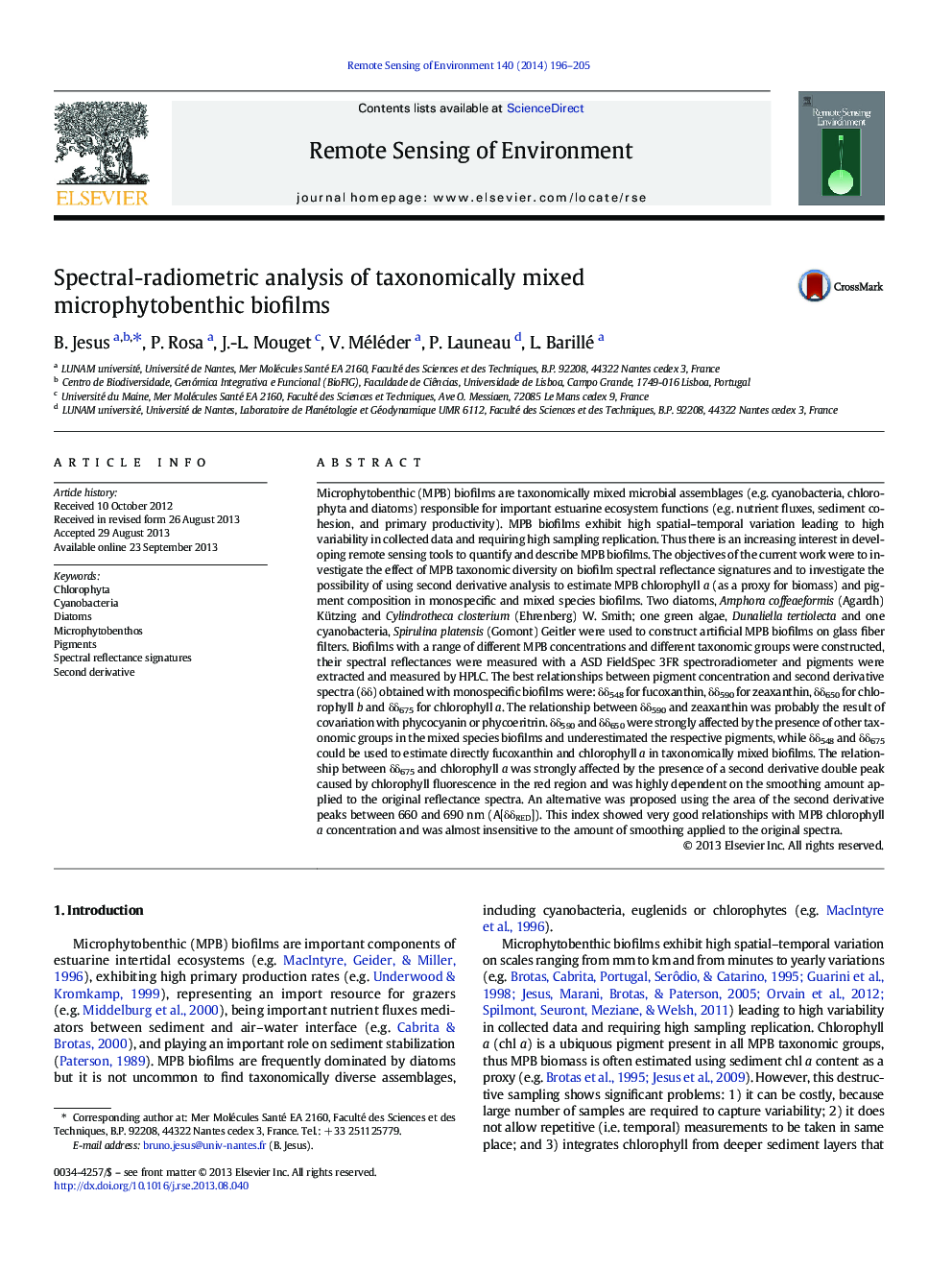| کد مقاله | کد نشریه | سال انتشار | مقاله انگلیسی | نسخه تمام متن |
|---|---|---|---|---|
| 6346990 | 1621260 | 2014 | 10 صفحه PDF | دانلود رایگان |
- 2nd derivative reflectance peaks can be used to identify different microphytobenthic taxonomic groups.
- 2nd derivative peak magnitude at 548Â nm is correlated with fucoxanthin concentration.
- 2nd derivative peaks at 650Â nm indicate the presence of chlorophyll b.
- Area of the 2nd derivative peak in the red region can be used to quantify chlorophyll a.
Microphytobenthic (MPB) biofilms are taxonomically mixed microbial assemblages (e.g. cyanobacteria, chlorophyta and diatoms) responsible for important estuarine ecosystem functions (e.g. nutrient fluxes, sediment cohesion, and primary productivity). MPB biofilms exhibit high spatial-temporal variation leading to high variability in collected data and requiring high sampling replication. Thus there is an increasing interest in developing remote sensing tools to quantify and describe MPB biofilms. The objectives of the current work were to investigate the effect of MPB taxonomic diversity on biofilm spectral reflectance signatures and to investigate the possibility of using second derivative analysis to estimate MPB chlorophyll a (as a proxy for biomass) and pigment composition in monospecific and mixed species biofilms. Two diatoms, Amphora coffeaeformis (Agardh) Kützing and Cylindrotheca closterium (Ehrenberg) W. Smith; one green algae, Dunaliella tertiolecta and one cyanobacteria, Spirulina platensis (Gomont) Geitler were used to construct artificial MPB biofilms on glass fiber filters. Biofilms with a range of different MPB concentrations and different taxonomic groups were constructed, their spectral reflectances were measured with a ASD FieldSpec 3FR spectroradiometer and pigments were extracted and measured by HPLC. The best relationships between pigment concentration and second derivative spectra (δδ) obtained with monospecific biofilms were: δδ548 for fucoxanthin, δδ590 for zeaxanthin, δδ650 for chlorophyll b and δδ675 for chlorophyll a. The relationship between δδ590 and zeaxanthin was probably the result of covariation with phycocyanin or phycoeritrin. δδ590 and δδ650 were strongly affected by the presence of other taxonomic groups in the mixed species biofilms and underestimated the respective pigments, while δδ548 and δδ675 could be used to estimate directly fucoxanthin and chlorophyll a in taxonomically mixed biofilms. The relationship between δδ675 and chlorophyll a was strongly affected by the presence of a second derivative double peak caused by chlorophyll fluorescence in the red region and was highly dependent on the smoothing amount applied to the original reflectance spectra. An alternative was proposed using the area of the second derivative peaks between 660 and 690 nm (A[δδRED]). This index showed very good relationships with MPB chlorophyll a concentration and was almost insensitive to the amount of smoothing applied to the original spectra.
Journal: Remote Sensing of Environment - Volume 140, January 2014, Pages 196-205
